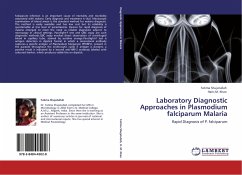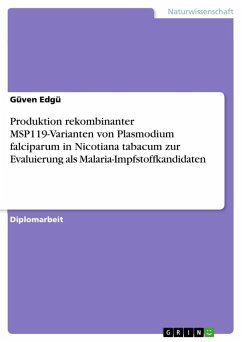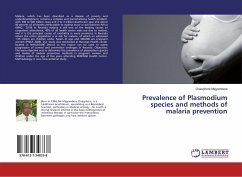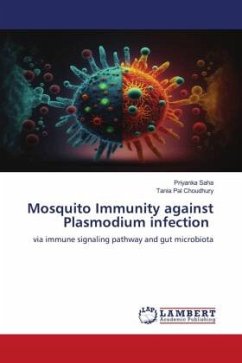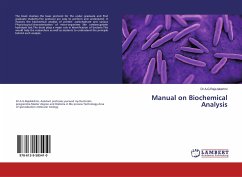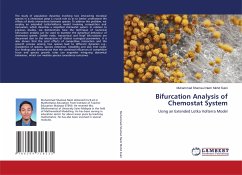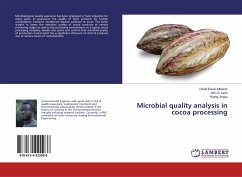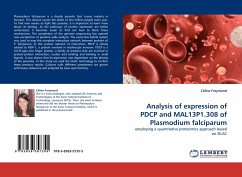
Analysis of expression of PDCP and MAL13P1.308 of Plasmodium falciparum
employing a quantitative proteomics approach based on SILAC
Versandkostenfrei!
Versandfertig in 6-10 Tagen
32,99 €
inkl. MwSt.

PAYBACK Punkte
16 °P sammeln!
Plasmodium falciparum is a deadly parasite that causes malaria in humans. This disease causes the death of one million people every year. To find new means to fight this parasite, it is important to learn more about its biology. As the pathways of protein expression are better understood, it becomes easier to find out how to block these mechanisms. The completion of the genome sequencing has opened new perspective of genome wide analysis. The yeast-two-hybrid system was used to map the complete interaction network between proteins of P. falciparum. In this protein network of interaction, PDCP ...
Plasmodium falciparum is a deadly parasite that causes malaria in humans. This disease causes the death of one million people every year. To find new means to fight this parasite, it is important to learn more about its biology. As the pathways of protein expression are better understood, it becomes easier to find out how to block these mechanisms. The completion of the genome sequencing has opened new perspective of genome wide analysis. The yeast-two-hybrid system was used to map the complete interaction network between proteins of P. falciparum. In this protein network of interaction, PDCP is closely related to MSP-1, a protein involved in erythrocyte invasion. PDCP is a CCCH-type zinc finger protein, a family of proteins that are involved in protein-protein interaction, nucleic acid binding and binding in small ligands. It was shown that its expression was dependant on the density of the parasites. In this study we used the SILAC technology to confirm these previous results. Cultures with different parasitemia are grown with heavy isoleucine and analyzed by mass spectrometry.



